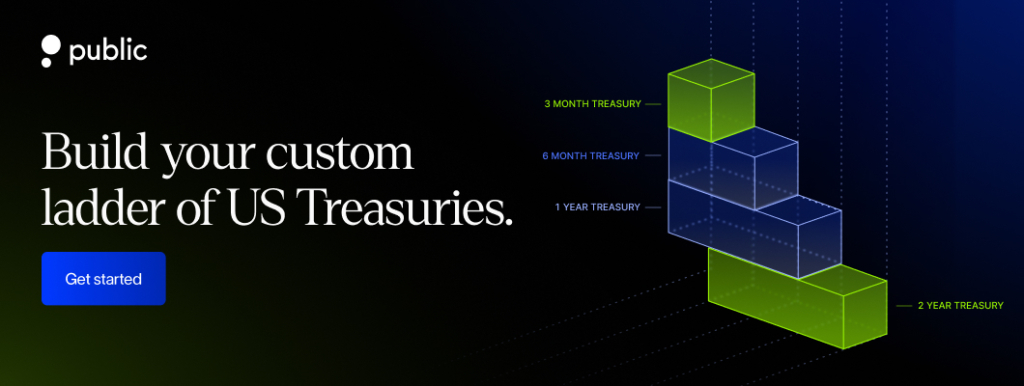For many investors, creating a diversified portfolio means expanding beyond equity markets (like stocks) and buying fixed-income securities (like bonds).
The U.S. Department of the Treasury issues debt securities called Treasury bonds (aka Treasuries) that provide fixed income in the form of bond interest rate payouts over time. Here’s a quick rundown of how they work and how you can buy them for your own portfolio.
A peek into how Treasury bonds work
Here’s a quick-hitting lesson on how Treasury bonds work
- Are electronically issued bonds from the U.S. government
- Have fixed interest rates that change at each auction (the round issued November 30, 2022 is 4.0%)
- Mature in 20 or 30 years, depending on which type you buy
- Pay out fixed-rate interest every six months (you can cash out early or hold to maturity)
- Have a minimum purchase price of $100 and can be bought in $100 increments
- Auction as new issues four times per year and reopenings eight times per year
Learn more about investing options in the U.S. through Public.com’s community-centered investing app.
What to consider before buying treasury bonds
If you’re looking to buy Treasury securities, know that Treasury bonds are a different category than savings bonds. Unlike savings bonds, Treasury bonds can be traded before the maturity date on secondary markets. This makes Treasury bonds a liquid investment that you can easily convert to cash. (Other liquid Treasury securities include short-term Treasury bills, which can mature in a matter of weeks.)
Treasury bonds are considered low risk because the federal government guarantees interest. The same cannot be said for equities like stocks, ETFs, and mutual funds that experience volatility.
However, the benefit for your money is also low, because interest payments tend to be on the low side. Other types of bonds, like Series I savings bonds that reflect inflation trends, may offer higher yields if inflation becomes greater than market consensus.
If you want to buy bonds, know that the Internal Revenue Service (IRS) requires you to pay federal income tax each year on any interest you earn. On the plus side, there are no state or local tax requirements.
How to buy Treasury bonds four ways
There are four avenues for purchasing Treasury marketable securities. Regardless of which path you choose, you must bid on the Treasury bonds in an auction:
- TreasuryDirect: You can buy Treasury bonds directly at TreasuryDirect.gov. Create a TreasuryDirect account and take part in non-competitive bids.
- Bank: You can get Treasury bonds with a bank account at a participating financial institution in competitive or non-competitive bids.
- Broker: You can get Treasury bonds with a brokerage account in competitive or non-competitive bids.
- Dealer: You can get Treasury bonds with securities dealers in competitive or non-competitive bids.
Conclusion
You can’t take all investments at face value, but with Treasury bond prices and interest payments, what you see is what you get. Treasury bond investing can be part of your diversified plan to save for retirement or other long-term goals if it makes sense with your personal finance and investing strategy. so you’re ready to invest in U.S. government bonds if and when the time comes.
The Fed’s recent interest rate increases has made investing in T-bills particularly appealing for many investors. T-bills currently yield a return of 4.21% (as of 9/11/24) and outperform many other low-risk options, including high-yield savings accounts. Treasury Bills have a short maturity period and are backed by the full faith of the US government, making them a strong option for investors in need of a short-term and low-risk investment vehicle. In the current economic climate, T-bills also offer a higher yield return than many other investments.
Frequently asked questions
How many Treasury bonds can you buy?
You may buy up to $10 million in Treasury bonds at each auction.
What is the best way to buy U.S. Treasury bonds?
You may buy Treasury bonds with an account at TreasuryDirect.gov, your bank, broker, or dealer.
How much money do you need to buy a Treasury bond?
You need a minimum of $100 to buy Treasury bonds.
What are the benefits of buying a Treasury bond?
Treasury Bonds offer the benefits of low risk and high liquidity.
What are the five types of Treasury marketable securities?
The five types of Treasury marketable securities are Treasury bills, Treasury notes, Treasury bonds, Treasury Inflation-Protected Securities (TIPS), and Floating Rate Notes (FRNs).
What is the difference between a Treasury bond and a Treasury note?
Treasury notes (aka T-notes) have a shorter maturity period (2–10 years) than Treasury bonds (20–30 years).

